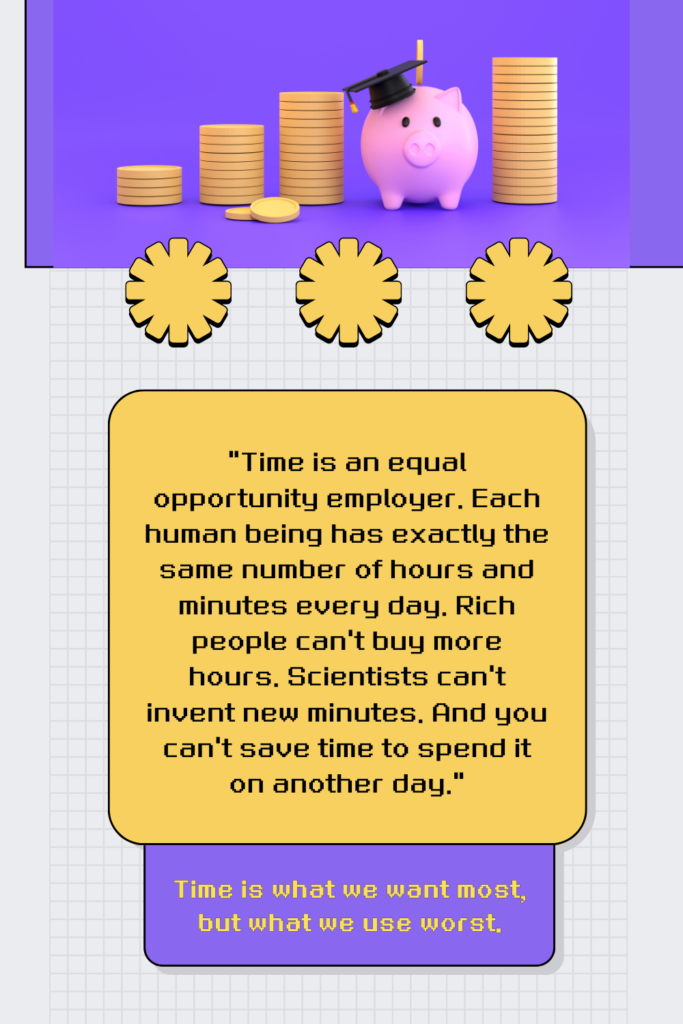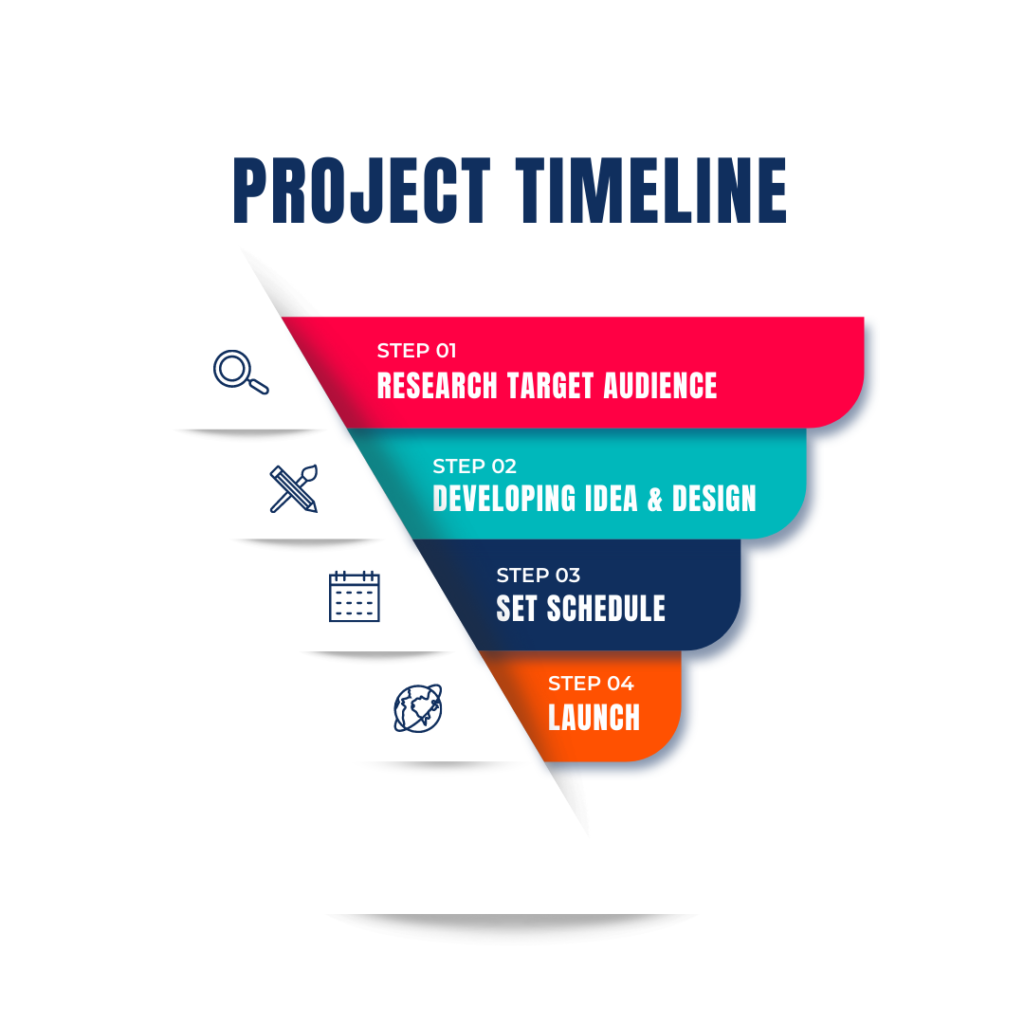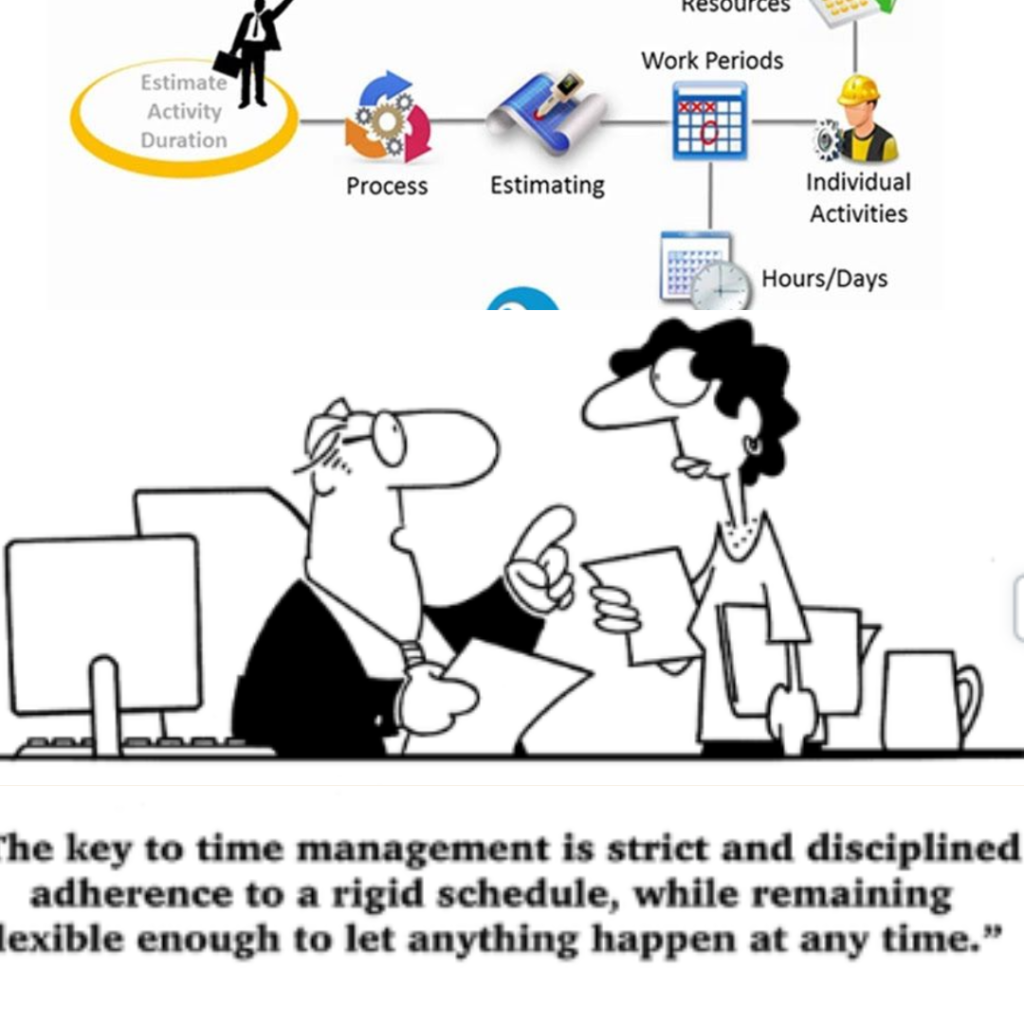Effective time management is the cornerstone of successful project execution. Throughout this exploration of time management strategies, we have discovered invaluable tools and techniques to optimize productivity, prioritize tasks, and overcome hurdles. By setting clear objectives and breaking down projects into manageable milestones, teams can stay on track and measure progress effectively. Accurate time estimation and resource allocation ensure efficient use of resources and prevent unnecessary delays. Furthermore, by embracing a positive time management mindset and adopting productivity habits, individuals can overcome procrastination and maintain focus in both remote and hybrid work environments.
Ultimately, effective time management is not just about meeting deadlines; it is about optimizing productivity, delivering quality outcomes, and exceeding expectations. By implementing the key strategies discussed and drawing inspiration from successful case studies, we can unlock the potential for excellence in project execution. Time management is the engine that propels projects forward, making the seemingly impossible achievable and transforming vision into reality. Embracing these time management principles, we are poised to empower ourselves and our teams to conquer any project challenge and achieve greatness.
Table of Contents
I. Introduction
Welcome to the ultimate guide on mastering project time management! In today’s fast-paced business environment, efficient time management is crucial for the success of any project. Whether you are a project manager, team member, or a freelancer, understanding how to effectively manage time will not only boost your productivity but also ensure the timely completion of tasks and project deliverables. This blog aims to equip you with essential time management techniques, tools, and strategies to achieve your project goals and maximize efficiency.

In this comprehensive guide, we will delve into the core principles of project time management and provide practical tips to overcome common challenges. From setting clear objectives and milestones to harnessing the power of time-tracking tools, we will cover everything you need to know to optimize your time and resources effectively. Additionally, we will explore how to handle dependencies, constraints, and unexpected delays that might arise during the project lifecycle. By the end of this blog, you will have the knowledge and confidence to lead your team towards successful project outcomes through efficient time management.
A. Importance of Effective Project Time Management
Effective project time management is the cornerstone of project success, and its significance cannot be overstated. When time is managed efficiently, several benefits arise, such as:
- Meeting Deadlines: Proper time management ensures that tasks and project milestones are completed on time, leading to successful project completion within the given timeframe.
- Resource Optimization: Time management allows for optimal utilization of resources, ensuring that the right resources are allocated to the right tasks at the right time.
- Improved Productivity: By prioritizing tasks and setting realistic deadlines, teams can stay focused and work efficiently, resulting in increased productivity levels.
Example: Consider a software development project with strict deadlines for product launch. Effective time management ensures that the development team adheres to the project schedule, performs regular code reviews, and resolves any issues promptly, leading to a successful and timely product launch.
B. Overview of the Blog’s Content
This blog is structured to provide a comprehensive understanding of project time management, covering various aspects of the process. The key sections are as follows:
- Understanding Project Time Management: This section introduces the fundamental concepts and challenges of project time management.
- Setting Clear Objectives and Milestones: Here, we discuss the importance of defining project scope, breaking down tasks, and establishing realistic milestones.
- Prioritization Techniques for Optimal Time Allocation: This section explores various methods to prioritize tasks and allocate time efficiently.
- Time Estimation and Resource Allocation: Learn techniques to estimate task durations accurately and allocate resources effectively.
- Time-Tracking Tools and Software: Discover popular time-tracking tools and their benefits for effective time management.
- Effective Time Management Strategies for Teams: This section focuses on communication, delegation, and eliminating time-wasting activities within a team setting.
- Managing Project Dependencies and Constraints: Explore techniques to identify and address dependencies and constraints that can impact project timelines.
- Time Management Tips for Remote and Hybrid Workforces: Get insights into managing time effectively in remote and hybrid work environments.
- Monitoring and Measuring Time Management Progress: Learn how to track project milestones and performance metrics to continually improve time management.
- Overcoming Procrastination and Time Management Hurdles: Discover strategies to combat procrastination and cultivate a positive time management mindset.
- Case Studies: Successful Time Management in Real Projects: Review industry-specific examples of projects that excelled in time management.
- Conclusion: Summarize the key time management strategies discussed in the blog and encourage readers to apply them in their projects.
By following this comprehensive guide, readers will be equipped with the knowledge and tools to optimize time management, leading to increased productivity and successful project outcomes.
II. Understanding Project Time Management
A. Definition and Key Concepts
Project time management refers to the process of effectively planning, scheduling, and controlling the allocation of time and resources to achieve project objectives. It involves breaking down the project into manageable tasks, estimating the time required for each task, and creating a timeline to ensure timely completion of deliverables. Key concepts in project time management include:
- Work Breakdown Structure (WBS): A hierarchical breakdown of the project into smaller, manageable tasks, facilitating better planning and resource allocation.
- Activity Sequencing: The process of determining the order in which project tasks should be executed to maximize efficiency and minimize dependencies.
- Estimation Techniques: Various methods, such as expert judgment, historical data analysis, and parametric estimation, to predict the time required for completing tasks.
- Critical Path: The sequence of tasks that determines the shortest time required to complete the project; any delays on the critical path will delay the project’s overall timeline.
Example: In a construction project to build a house, the WBS would include tasks such as foundation laying, framing, roofing, and finishing. Activity sequencing would determine that framing must be completed before roofing can begin. Estimation techniques would be used to estimate the time required for each task, and the critical path would identify the sequence of tasks crucial for completing the house on time.
B. The Role of Time Management in Project Success
Effective project time management plays a pivotal role in the overall success of a project. It impacts various aspects of project execution, leading to positive outcomes:
- Timely Project Completion: Proper time management ensures that project tasks are completed on schedule, allowing for the timely delivery of products or services.
- Cost Control: Efficient time management prevents time wastage, reducing the need for additional resources and preventing cost overruns.
- Customer Satisfaction: Meeting project deadlines enhances customer satisfaction by delivering products or services as promised.
- Risk Mitigation: Time management helps identify potential delays and enables project managers to take proactive measures to address risks.
Example: In a software development project with a fixed launch date, effective time management ensures that development, testing, and deployment are completed as planned, leading to a successful product launch and satisfied customers.
C. Common Challenges and Pitfalls
Despite the importance of time management, projects often face challenges that can hinder successful execution. Common challenges and pitfalls include:
- Inaccurate Time Estimations: Underestimating the time required for tasks can lead to delays and disruption in project timelines.
- Scope Creep: Uncontrolled changes in project scope can impact time management by introducing additional tasks and dependencies.
- Resource Constraints: Limited availability of resources can lead to scheduling conflicts and delays in task execution.
- Inadequate Communication: Poor communication among team members can lead to misunderstandings, task duplication, and delays.
Example: In a marketing campaign project, if the team underestimates the time needed for creating promotional materials, it can result in delayed campaign launches, affecting overall marketing objectives.
By understanding these key concepts and being aware of common challenges, project managers can proactively address time management issues and improve the likelihood of successful project completion. Effective time management ensures projects are completed within deadlines, resources are optimized, and overall project success is achieved.
III. Setting Clear Objectives and Milestones
A. Defining Project Scope and Deliverables
Before embarking on any project, it is crucial to define the project scope and deliverables clearly. The project scope outlines the boundaries of the project, specifying what will be included and what will be excluded. It helps in setting realistic expectations and preventing scope creep. Key steps in defining project scope and deliverables include:
- Stakeholder Alignment: Engage with all stakeholders to understand their expectations and requirements for the project.
- Documenting Requirements: Document the specific deliverables and outcomes expected from the project.
- Setting Constraints: Identify any constraints, such as budget limitations or resource availability, that may impact the project scope.
- Scope Statement: Develop a comprehensive scope statement that clearly outlines the project’s objectives, goals, and limitations.
Example: For a website development project, the project scope could include creating a responsive design, integrating an e-commerce platform, and optimizing for search engines. Deliverables would consist of a fully functional website with specific features and functionalities.
B. Breaking Down the Project into Smaller Tasks
Once the project scope and deliverables are defined, the next step is to break down the project into smaller, manageable tasks. This process, known as work breakdown structure (WBS), involves dividing the project into hierarchical levels of detail. Benefits of breaking down the project include:
- Improved Planning: Breaking down tasks allows for better planning and resource allocation.
- Task Delegation: Smaller tasks are easier to assign to team members, enabling efficient task delegation.
- Clarity and Accountability: Clearly defined tasks enhance clarity and accountability within the project team.
- Progress Tracking: Smaller tasks facilitate better progress tracking and ensure the project stays on schedule.
Example: In a marketing campaign project, the work breakdown structure may include tasks such as market research, content creation, social media scheduling, and performance analysis.
C. Establishing Realistic Milestones and Deadlines
With the project broken down into smaller tasks, it’s essential to establish realistic milestones and deadlines. Milestones are significant points in the project timeline that mark the completion of key deliverables or phases. Setting achievable milestones and deadlines helps in:
- Time Management: Clearly defined milestones provide a timeline for the project’s progress and enable effective time management.
- Motivation and Focus: Milestones create a sense of accomplishment and keep the team motivated and focused.
- Early Issue Identification: Timely milestones allow for the early identification of any issues or deviations from the plan.
- Client Communication: Milestones serve as opportunities for client communication and feedback.
Example: In a construction project, milestones could be the completion of the foundation, finishing the roofing, and the final inspection before handing over the property to the client.
By setting clear project objectives, breaking down tasks, and establishing realistic milestones and deadlines, project managers lay a strong foundation for successful project execution. These steps not only enhance project planning but also improve communication, resource allocation, and overall project control.
IV. Prioritization Techniques for Optimal Time Allocation
A. Eisenhower Matrix: Urgency and Importance
The Eisenhower Matrix, also known as the Eisenhower Decision Matrix, is a powerful tool for prioritizing tasks based on their urgency and importance. It helps individuals and teams make effective decisions about task management by categorizing tasks into four quadrants:
- Quadrant 1 – Urgent and Important: Tasks that are both urgent and important require immediate attention. They should be prioritized and addressed promptly to avoid negative consequences.
- Quadrant 2 – Important but Not Urgent: Tasks in this quadrant are important for long-term goals and planning but do not require immediate action. They should be scheduled and managed to prevent them from becoming urgent.
- Quadrant 3 – Urgent but Not Important: Tasks in this quadrant may be urgent, but they do not contribute significantly to long-term goals. Delegation or elimination of such tasks can free up time for more critical activities.
- Quadrant 4 – Not Urgent and Not Important: Tasks in this quadrant are neither urgent nor important and can be considered distractions. Minimizing or eliminating these tasks can increase productivity.
Example: In a project management scenario, responding to critical client inquiries would fall into Quadrant 1, while conducting market research for future projects would be categorized under Quadrant 2.
B. The ABCD Method: Categorizing Tasks
The ABCD method is another prioritization technique that categorizes tasks based on their importance and impact on project goals. This method involves dividing tasks into four categories:
- A – High Priority (Critical): These are tasks that have a significant impact on project success and must be addressed with top priority.
- B – Medium Priority (Important): Tasks in this category are important but not as critical as A tasks. They should be managed after addressing the high-priority items.
- C – Low Priority (Desirable): These tasks have some importance, but their impact on project success is relatively low. They can be managed after A and B tasks.
- D – Delegate or Delete (Non-Essential): Tasks in this category have minimal impact on project goals and can be delegated to others or eliminated altogether.
Example: In a product development project, debugging critical software issues would be classified as an A task, while conducting team training sessions could be categorized as a B task.
C. Pareto Principle: Identifying the Most Critical Tasks
The Pareto Principle, also known as the 80/20 rule, states that roughly 80% of the results come from 20% of the efforts. In the context of project time management, this principle helps identify the most critical tasks that have the highest impact on project success. By focusing on these vital few tasks, teams can optimize their time and resources effectively.
Key points of the Pareto Principle include:
- Identify the Vital Few: Analyze the tasks and activities within the project to identify the 20% of tasks that will deliver 80% of the desired outcomes.
- Focus on High-Impact Tasks: Concentrate the team’s efforts on the tasks that align with project objectives and have the most significant impact on achieving success.
- Eliminate or Delegate Low-Impact Tasks: Consider delegating or eliminating tasks that have minimal impact on project outcomes to free up resources for more critical activities.
- Regularly Review Priorities: Reassess task priorities periodically, as project circumstances may change, and new critical tasks may emerge.
Example: In a content marketing project, applying the Pareto Principle might involve identifying the 20% of content topics that drive 80% of website traffic and focusing on creating high-quality content for those topics.
By utilizing the Pareto Principle, project managers can make informed decisions about task prioritization, ensuring that the team’s efforts are channeled towards the most crucial tasks. This approach enhances time management, optimizes resource allocation, and maximizes the likelihood of project success.
V. Time Estimation and Resource Allocation
A. Techniques for Accurate Time Estimation
Accurate time estimation is essential for effective project planning and scheduling. Proper estimation ensures that project timelines are realistic, and teams can meet deadlines efficiently. Here are some techniques to achieve accurate time estimation:
- Expert Judgment: Seek input from experienced team members or subject matter experts who can provide valuable insights into task durations based on their expertise.
- Analogous Estimating: Use historical data from similar past projects as a reference point to estimate the time required for current tasks.
- Parametric Estimating: Utilize statistical relationships between historical data and project variables (such as size or complexity) to estimate task durations.
- Three-Point Estimating: Incorporate best-case, worst-case, and most likely scenario estimates to calculate a more reliable time estimate.
Example: In a software development project, expert judgment could be sought from senior developers to estimate the time required for coding specific modules. Parametric estimating might involve using the lines of code as a variable to estimate development time.
B. Allocating Resources Efficiently
Effective resource allocation ensures that the right resources are available when needed, preventing bottlenecks and delays. Here are strategies for efficient resource allocation:
- Resource Leveling: Balance resource allocation to avoid overloading or underutilizing team members during different project phases.
- Resource Histograms: Use visual tools like resource histograms to monitor and optimize resource allocation across tasks and project timelines.
- Skill Matching: Assign tasks to team members based on their skills and expertise to improve efficiency and quality of work.
- Resource Pooling: Create a shared pool of resources that can be flexibly allocated to tasks as needed.
Example: In a marketing campaign, resource leveling may involve ensuring that graphic designers are not overloaded during the peak design phase, while copywriters have sufficient work to avoid downtime.
C. Dealing with Unexpected Delays
In any project, unexpected delays are inevitable. Effective time management involves handling these delays efficiently to minimize their impact on project schedules. Consider these approaches:
- Contingency Planning: Build contingency time into the project schedule to account for potential delays or unforeseen circumstances.
- Identify Critical Path: Identify the critical path of the project—the sequence of tasks that determines the project’s overall duration—and focus on managing tasks on the critical path to prevent delays.
- Reassessment and Adjustments: Regularly reassess project timelines, resources, and priorities in response to unexpected delays and make necessary adjustments to mitigate their effects.
- Effective Communication: Maintain open communication with stakeholders and team members about potential delays and work collaboratively to find solutions.
Example: In a construction project, if there is a delay in the delivery of building materials, the project manager may adjust the construction schedule by reallocating resources or prioritizing tasks to maintain overall project timelines.
By employing accurate time estimation techniques, efficient resource allocation strategies, and proactive approaches to dealing with delays, project managers can enhance time management and increase the likelihood of successful project completion. These practices empower teams to stay on track, optimize resource utilization, and adapt to unforeseen challenges, ensuring project success in dynamic environments.
VI. Time-Tracking Tools and Software
A. Overview of Popular Time-Tracking Tools
Time-tracking tools are invaluable aids in managing project time effectively. Let’s explore some popular time-tracking tools that have gained popularity among individuals and teams:
- Toggl: Toggl is a user-friendly and intuitive time-tracking tool that allows users to effortlessly track their time with a simple click. It offers various features, such as tags and detailed reports, making it suitable for freelancers, remote workers, and small to large teams.
- Harvest: Harvest is a comprehensive time-tracking tool that also includes features for expense tracking and invoicing. It is particularly favored by freelancers and small to medium-sized businesses due to its seamless integration with project management platforms.
- Clockify: Clockify is a free time-tracking tool that provides basic time tracking and reporting functionalities. It is an excellent choice for individuals and small teams looking for a straightforward and cost-effective solution.
- RescueTime: RescueTime is an automatic time-tracking tool that monitors and records the time spent on various applications and websites. It helps users gain insights into their productivity habits and identify potential time-wasting activities.
- ClickUp: ClickUp is a versatile project management platform that comes with built-in time-tracking capabilities. It offers a seamless integration of tasks and time monitoring, making it a favorite for teams seeking a unified project management solution.
Example: A graphic design agency may choose to use Harvest to track the time spent by its designers on different client projects and effortlessly generate invoices based on the tracked hours.
B. Benefits and Features of Time-Management Software
Time-management software brings a host of benefits and features that boost project efficiency and productivity. Some of these advantages include:
- Accurate Time Tracking: Time-management software ensures precise tracking of task durations, enabling accurate project progress measurement.
- Insightful Reports: Users can generate detailed reports that offer insights into individual and team performance, helping identify areas for improvement and optimizing time allocation.
- Resource Allocation: Analyze time data to allocate resources effectively and ensure teams are working on high-priority tasks, optimizing project execution.
- Billing and Invoicing: For freelancers and service-based businesses, time tracking simplifies accurate billing and invoicing for client projects, reducing errors and disputes.
- Integration Capabilities: Many time-tracking tools seamlessly integrate with project management software, streamlining data transfer and simplifying project tracking.
- Productivity Analysis: Time-management software helps analyze individual and team productivity patterns, allowing users to identify time-wasting activities and improve overall efficiency.
Example: A marketing agency using time-management software can generate insightful reports that analyze time spent on various marketing campaigns, enabling them to identify the most productive and successful strategies.
C. Integrating Time-Tracking with Project Management
Integrating time-tracking with project management software offers a holistic approach to manage projects effectively. Some benefits of this integration include:

- Real-Time Project Tracking: Time-tracking data directly feeds into project management software, providing real-time updates on task progress and overall project status.
- Task Dependencies: Integration allows for better identification of task dependencies and critical paths, enabling smoother project scheduling and resource allocation.
- Resource Optimization: Project managers can use time data to allocate resources efficiently and ensure teams focus on tasks that align with project goals.
- Automated Reporting: Integrating time-tracking with project management enables automated generation of time reports, saving time and effort in manual report preparation.
- Project Analysis: Combining time-tracking data with project management data allows for deeper project analysis and continuous improvement, leading to enhanced project outcomes.
Example: By integrating time-tracking features into their project management platform, a software development team can closely monitor time spent on different development phases and optimize schedules based on real-time data.
By leveraging time-tracking tools and integrating them with project management software, project managers and teams can gain valuable insights, enhance time management, improve resource allocation, and ultimately achieve successful project outcomes. Time-tracking fosters accountability, aids in project planning, and contributes to overall project success.
VII. Effective Time Management Strategies for Teams
A. Effective Communication and Collaboration
Effective communication and collaboration are crucial for optimizing time management within teams. Here are some strategies to foster seamless communication and teamwork:
- Regular Team Meetings: Schedule regular team meetings to discuss project progress, goals, and challenges. Encourage open communication, where team members can share updates and concerns.
- Clear Task Assignments: Clearly define tasks, responsibilities, and deadlines for each team member to avoid confusion and ensure everyone knows their role in the project.
- Collaboration Tools: Utilize collaboration tools, such as project management software, instant messaging platforms, and video conferencing, to facilitate real-time communication and quick information sharing.
- Encourage Feedback: Create an environment where team members feel comfortable providing feedback and suggestions, fostering continuous improvement and better time management practices.
Example: In a software development team, using a project management tool like Jira can facilitate collaboration, allowing developers, testers, and product owners to communicate effectively and stay updated on the project’s progress.
B. Delegating Tasks and Empowering Team Members
Effective time management involves delegating tasks wisely and empowering team members to take ownership of their work. Consider these strategies:
- Strength-Based Delegation: Assign tasks to team members based on their strengths and expertise to maximize efficiency and quality of outcomes.
- Encourage Autonomy: Provide team members with the autonomy to make decisions related to their tasks, enabling faster execution and increased accountability.
- Set Clear Expectations: Clearly communicate the project’s vision, goals, and expected outcomes to empower team members with a sense of purpose.
- Recognize and Reward: Recognize and reward team members for their achievements and contributions, boosting morale and motivation.
Example: In a marketing team, the manager can delegate content creation tasks to the team member with strong writing skills, social media tasks to the individual with expertise in digital marketing, and design tasks to the graphic designer.
C. Identifying and Eliminating Time-Wasting Activities
To improve time management, it is crucial to identify and eliminate activities that do not contribute significantly to project goals. Consider these steps:
- Time Audit: Conduct a time audit to identify where time is being spent inefficiently or on non-essential tasks.
- Prioritization and Focus: Encourage team members to prioritize high-impact tasks and maintain focus to avoid distractions.
- Streamline Processes: Identify and streamline processes to remove bottlenecks and reduce unnecessary steps.
- Continuous Improvement: Foster a culture of continuous improvement, where team members regularly evaluate their work processes and seek ways to optimize them.
Example: In a customer support team, automating certain responses to common queries can save time, allowing the team to focus on addressing more complex customer issues.
By implementing effective communication and collaboration practices, delegating tasks strategically, and eliminating time-wasting activities, teams can significantly improve their time management skills. This leads to enhanced productivity, better task execution, and successful project outcomes within the defined timelines.
VIII. Managing Project Dependencies and Constraints
A. Identifying and Addressing Interdependencies
Identifying and addressing project interdependencies is vital to ensure smooth project execution. Interdependencies refer to the relationships between tasks or activities that rely on each other for successful completion. Here are strategies to manage interdependencies:
- Dependency Mapping: Create a visual map of task dependencies to understand how tasks are connected and which ones are critical for project progress.
- Risk Assessment: Identify potential risks associated with interdependencies and develop contingency plans to mitigate their impact.
- Effective Communication: Foster open communication among team members to keep them informed about interdependencies, potential delays, and the impact on other tasks.
- Task Sequencing: Prioritize and sequence tasks based on their dependencies to ensure that the necessary prerequisites are completed before proceeding with dependent tasks.
Example: In a product development project, the design team’s work must be completed before the manufacturing team can begin production. Identifying this dependency ensures that the project progresses smoothly.
B. Dealing with Constraints and Critical Paths
Constraints are limitations that can impact project schedules, budgets, or resources. The critical path refers to the sequence of tasks that determines the project’s overall duration. Strategies to manage constraints and the critical path include:
- Identify Constraints Early: Identify and assess potential constraints during project planning to develop strategies for managing them effectively.
- Resource Optimization: Allocate resources strategically to address critical tasks and manage constraints that may impact the critical path.
- Fast Tracking and Crashing: Consider fast-tracking (overlapping tasks) or crashing (adding resources) critical path tasks to accelerate project completion.
- Continuous Monitoring: Regularly monitor project progress and critical tasks to ensure they are on track and any deviations are promptly addressed.

Example: In a construction project with a tight deadline, the critical path may involve the sequence of tasks required to complete the foundation, structure, and interior finishing. Managing these critical tasks efficiently is essential to meet the project deadline.
C. Handling Changes and Adaptability in Time Management
Project environments are dynamic, and changes are inevitable. Being adaptable is essential to manage time effectively. Consider these approaches:
- Change Management Plan: Develop a change management plan that outlines how changes will be identified, evaluated, and implemented without disrupting the project schedule.
- Risk Analysis: Conduct risk analysis regularly to identify potential changes that may impact project timelines and devise contingency plans to mitigate risks.
- Flexibility in Scheduling: Incorporate buffers and slack in the project schedule to accommodate unexpected changes and minimize the impact on critical tasks.
- Stakeholder Engagement: Engage with stakeholders throughout the project to understand their evolving needs and expectations, adjusting the project plan as necessary.
Example: In a software development project, if there is a change in the project scope requested by the client, the project manager can assess its impact on the timeline and resource allocation and communicate any adjustments to the team.
By effectively managing project dependencies, constraints, and adaptability, project managers can navigate challenges and uncertainties, ensuring successful project delivery within the agreed-upon timelines and meeting stakeholder expectations. These strategies help maintain project momentum, minimize delays, and optimize overall time management.
IX. Time Management Tips for Remote and Hybrid Workforces
A. Maintaining Discipline and Focus in Remote Work
Working remotely can offer flexibility but also poses challenges in managing time effectively. Here are tips to maintain discipline and focus in remote work:
- Designate a Workspace: Set up a dedicated workspace that minimizes distractions and helps create a professional environment for work.
- Stick to a Routine: Establish a daily routine, including regular work hours, breaks, and time for tasks, to maintain a sense of structure and discipline.
- Minimize Distractions: Identify potential distractions and take proactive measures to limit them during work hours. This could include silencing notifications or using website blockers.
- Set Clear Goals: Define specific, achievable goals for each day or week to maintain focus and track progress.
- Time Blocking: Allocate specific time blocks for different tasks, ensuring that each activity receives dedicated attention.
Example: A remote graphic designer can set aside focused time blocks for designing, reviewing client feedback, and communicating with team members.
B. Balancing Work and Personal Life
Maintaining a healthy work-life balance is essential for remote and hybrid workers. Here are strategies to achieve this balance:
- Set Boundaries: Clearly define boundaries between work and personal life. Avoid working beyond regular hours and resist the temptation to check work emails during personal time.
- Create Time for Breaks: Incorporate short breaks throughout the workday to relax, recharge, and avoid burnout.
- Plan Personal Activities: Schedule personal activities and hobbies during non-work hours to ensure time for self-care and leisure.
- Communicate with Family and Friends: Inform family members and friends about your work schedule to minimize interruptions during work hours.
Example: A remote marketing professional can establish a rule of not checking work emails during evenings and weekends to create a clear boundary between work and personal time.
C. Embracing Time-Zone Differences for Global Projects
In hybrid or remote teams spread across different time zones, effective time management is crucial. Consider these tips to embrace time-zone differences:
- Schedule Overlap Time: Identify overlapping work hours between team members in different time zones to facilitate real-time collaboration and communication.
- Use Time-Zone Converters: Utilize time-zone converter tools to avoid scheduling conflicts and ensure everyone is aware of meeting times in their local time zones.
- Flexible Meeting Scheduling: Rotate meeting times to accommodate different time zones and avoid consistently burdening specific team members with inconvenient meeting hours.
- Record Meetings: Record meetings for team members who cannot attend live due to time-zone differences, enabling them to catch up later.
Example: For a global software development project, the project manager can use a time-zone converter to find the best meeting time that accommodates all team members’ schedules.
By following these time management tips, remote and hybrid workers can enhance their productivity, strike a healthy work-life balance, and collaborate effectively with colleagues from diverse time zones. A disciplined approach to remote work, combined with respecting personal time and embracing time-zone differences, contributes to a successful and well-managed remote or hybrid work environment.
X. Monitoring and Measuring Time Management Progress
A. Tracking Project Milestones and Timelines
Tracking project milestones and timelines is essential to ensure that the project stays on track and is completed within the scheduled timeframe. Here are ways to effectively track progress:
- Project Management Software: Utilize project management tools that provide visual representations of project timelines, milestones, and task completion status.
- Regular Progress Meetings: Conduct regular progress meetings to review milestones achieved, assess potential delays, and realign project priorities if necessary.
- Gantt Charts: Use Gantt charts to visualize project timelines, task dependencies, and critical path activities.
- Task Tracking: Monitor individual task progress, keeping an eye on completed tasks and any that are behind schedule.
Example: In a construction project, the project manager can use a project management tool to track the completion of different construction phases and milestones, such as foundation, framing, and finishing.
B. Analyzing Time-Management Performance Metrics
Analyzing time-management performance metrics provides insights into project efficiency and the effectiveness of time management strategies. Consider these performance metrics:
- Time Spent vs. Planned: Compare the actual time spent on tasks with the planned estimates to identify any variances and areas of improvement.
- Task Completion Rates: Analyze the percentage of completed tasks against scheduled tasks to assess team productivity.
- Resource Utilization: Evaluate how efficiently resources (e.g., team members, equipment) are used throughout the project.
- Time Overruns and Delays: Monitor the occurrence and impact of time overruns and delays on the overall project schedule.
Example: A software development team can analyze the time spent on each development phase compared to the planned estimates, identifying any bottlenecks or areas where improvements can be made.
C. Continuous Improvement and Lessons Learned
Continuous improvement is crucial for refining time management practices and enhancing project efficiency. To foster continuous improvement:
- Post-Project Reviews: Conduct post-project reviews to gather feedback from team members and stakeholders about time management processes and identify areas for improvement.
- Lessons Learned Sessions: Hold lessons learned sessions to document successes, challenges, and best practices related to time management.
- Implement Feedback: Act on feedback and lessons learned to make necessary adjustments and implement improvements in future projects.
- Training and Development: Provide training and development opportunities to enhance team members’ time management skills.
Example: After completing a marketing campaign, the marketing team can hold a lessons learned session to evaluate the effectiveness of their time management strategies and identify ways to streamline future campaigns.
By monitoring project milestones, analyzing time-management metrics, and embracing a culture of continuous improvement, project managers and teams can enhance their time management practices, optimize project execution, and achieve better outcomes. Regular evaluation and adjustment of time management strategies contribute to more successful projects and increased overall efficiency in the long run.
XI. Overcoming Procrastination and Time Management Hurdles
A. Identifying Personal Procrastination Patterns
Procrastination can hinder effective time management. To overcome it, individuals must first identify their personal procrastination patterns. Strategies to do this include:
- Self-Reflection: Take time to reflect on instances when procrastination has occurred and analyze the underlying reasons.
- Identify Triggers: Identify triggers that lead to procrastination, such as task complexity, fear of failure, or lack of interest.
- Set Clear Goals: Define clear and achievable goals to create a sense of purpose and motivation.
- Time Tracking: Use time-tracking tools to monitor time spent on productive tasks versus non-productive activities.
Example: An employee may notice that they tend to procrastinate when faced with challenging tasks or when they lack a clear plan of action.
B. Adopting Productivity Techniques and Habits
To improve time management and combat procrastination, individuals can adopt various productivity techniques and habits:
- Pomodoro Technique: Break tasks into short intervals (e.g., 25 minutes) with short breaks in between to maintain focus and avoid burnout.
- Eat the Frog: Tackle the most challenging task first to build momentum and reduce the urge to procrastinate.
- To-Do Lists: Create daily to-do lists to prioritize tasks and provide a sense of accomplishment upon completion.
- Time Blocking: Allocate specific time blocks for different tasks to maintain focus and avoid distractions.
- Reward System: Set up a reward system for completing tasks on time to create positive reinforcement.
Example: An individual can implement the Pomodoro Technique to work in focused intervals, taking short breaks between intervals to recharge.
C. Building a Positive Time Management Mindset
Cultivating a positive time management mindset is crucial for overcoming hurdles and staying on track. Strategies for building this mindset include:
- Positive Self-Talk: Replace negative self-talk with positive affirmations to boost self-confidence and motivation.
- Visualization: Visualize successful task completion and project outcomes to enhance commitment and determination.
- Celebrate Progress: Celebrate milestones and achievements, no matter how small, to maintain enthusiasm and motivation.
- Learn from Setbacks: View setbacks as learning opportunities and use them to improve future time management strategies.
Example: An entrepreneur can maintain a positive time management mindset by focusing on their successes, visualizing their business’s growth, and viewing challenges as stepping stones to progress.
By identifying personal procrastination patterns, adopting productivity techniques and habits, and building a positive time management mindset, individuals can overcome time management hurdles and boost productivity. Overcoming procrastination and developing effective time management skills contribute to a sense of accomplishment, increased productivity, and success in both personal and professional endeavors.
XII. Case Studies: Successful Time Management in Real Projects
A. Industry-Specific Examples
Real-world case studies illustrate how effective time management contributes to successful projects in various industries:
- IT Software Development Project: A software development company successfully launched a new mobile application within a tight deadline by utilizing agile project management methodologies. They employed time tracking tools to monitor individual and team progress, allowing for quick adjustments to prioritize critical tasks. The team held regular stand-up meetings to ensure continuous communication and alignment, leading to a timely and efficient product launch.
- Construction Project: A construction firm completed a complex infrastructure project ahead of schedule by proactively identifying potential delays during the planning phase. They utilized critical path analysis to prioritize tasks, closely monitored resources, and maintained an open line of communication among contractors and suppliers. By fostering collaboration and optimizing resource allocation, they achieved significant time savings without compromising quality.
- Marketing Campaign: A marketing agency executed a successful multi-channel marketing campaign by using time management tools to create a detailed project schedule. They leveraged time-blocking techniques to allocate specific time for each marketing activity, ensuring timely delivery of content and advertisements. The team regularly reviewed analytics data to adapt their strategies and optimize campaign performance throughout the project.
B. Lessons Learned from High-Profile Projects
High-profile projects provide valuable lessons on effective time management:
- SpaceX Falcon 9 Rocket Launches: SpaceX’s successful rocket launches demonstrate meticulous time management, where precise coordination and execution are critical. The company adheres to strict timelines, monitors every phase of the launch process, and plans for contingencies. This level of time management excellence allows them to achieve frequent and reliable launches.
- Olympic Games Preparation: Organizing the Olympic Games requires years of preparation and coordination. Host cities meticulously plan and manage time-sensitive construction, logistics, and event scheduling. To deliver a successful event, time management is crucial to synchronize numerous stakeholders and ensure seamless execution.
- Large Scale Software Deployments: Tech giants like Google and Microsoft manage large-scale software deployments with millions of users. Effective time management in these projects involves incremental releases, thorough testing, and robust contingency planning to minimize user disruptions and ensure a smooth transition.
XIII. Conclusion
A. Recap of Key Time Management Strategies
Throughout this exploration of time management, key strategies have emerged to enhance project success:
- Effective Planning: Careful planning is the foundation of successful time management. Setting clear objectives, defining tasks, and establishing realistic timelines are crucial steps.
- Prioritization: Identifying critical tasks and focusing on high-impact activities significantly improves time management efficiency.
- Task Delegation and Empowerment: Delegating tasks based on team members’ strengths and empowering them to take ownership leads to higher productivity.
- Adaptability and Continuous Improvement: Embracing change, fostering a culture of continuous improvement, and learning from setbacks are essential for effective time management.
B. Empowering Yourself and Your Team for Project Success
Effective time management empowers individuals and teams to accomplish more, meet deadlines, and deliver successful projects. By implementing the strategies discussed in this blog, individuals can overcome procrastination, manage project dependencies, utilize time-tracking tools, and optimize resource allocation. Empowering yourself and your team with strong time management skills enhances productivity, reduces stress, and ultimately leads to more successful and satisfying project outcomes. Remember, time is a valuable resource, and managing it effectively is the key to achieving project success.



